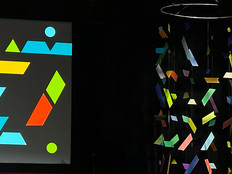College Help Desks Use Modern Tech Solutions to Enhance Services
Providing help desk support is crucial to ensure students, faculty and staff have consistent network access and other capabilities — but it can be a time-consuming endeavor. This can pose a challenge, particularly for smaller IT teams.
Insufficient staff resources are, in fact, the biggest obstacle to effectiveness that higher education IT departments face, according to a 2019 EDUCAUSE infographic.
To remedy the issue, a number of colleges and universities are turning to progressive digital solutions — which offer greater visibility, speedier feedback and a potentially more personal touch — to help manage requests and maximize the impact of the help desk.
MORE FROM EDTECH: See how universities can optimize campus IT by building a better team culture.
Analyzing and Automating Procedures Accelerates Service
Education sector help desks have one of the lowest initial response times — 27.7 hours, on average — out of nearly 20 industries, according to a comparison of over 20,000 customer metrics by software provider Zendesk. Only two segments, manufacturing and the nonprofit sector, provided slower responses.
To expedite the reply process, a number of universities have introduced self-service IT portals, where students can find information that answers some of their questions and submit and track help requests, reducing the need to involve an IT professional.
The University of Alabama at Birmingham replaced the tech FAW section on its website with a mobile-friendly portal, where users can search within an expanded article database and report any service issues.
Once a ticket has been entered, users see it on the front page when they log in to the system, making it easier to monitor and communicate with the IT team about the matter.
Data analytics may be able to help schools adjust staffing and otherwise proactively prepare to address influxes of requests that are cyclical due to course registration or other regular events during the academic year.
The University of Maryland, Baltimore County, for instance, replaced its client-based help desk system with Request Tracker, a free solution that was then integrated with the institution’s data warehouse.
In a blog post for EDUCAUSE Review, Joe Kirby, assistant vice president for UMBC’s IT division, says the system has allowed departments to view statistics on the volume and efficiency of work they perform — including generating customizable reports that identify patterns and help predict trends and showing whether alumni, undergraduates or other users are making requests.
University IT Use AI to Focus Content
Some campuses have also implemented artificial intelligence-enabled ticketing and communication solutions that tailor information to individual students’ needs.
SearchCIO.com reported in 2018 that Worcester Polytechnic Institute’s help desk team had used natural language processing and data from 100,000 request tickets to identify keywords that correlate with specific actions that are required to complete requests.
The Massachusetts school ultimately created an automated, streamlined system that reviews and directs each ticket to the appropriate place to be handled.
Georgia State University was able to reduce the number of students who accept an admission offer but don't actually enroll by 22 percent after debuting its AI-supported Pounce virtual assistant.
Incoming freshman were able to text questions and receive an almost immediate response. The tool also sent reminders and guidance about completing enrollment tasks.
One of the most significant measures of a solution’s success is how often it’s used — and in Pounce’s case, the majority of students seemed to welcome its help.
According to data from AdmitHub, which created Pounce for GSU, students commended the system’s accessibility and personalization capabilities, and 94 percent recommended that the university offer Pounce to the next incoming class.









